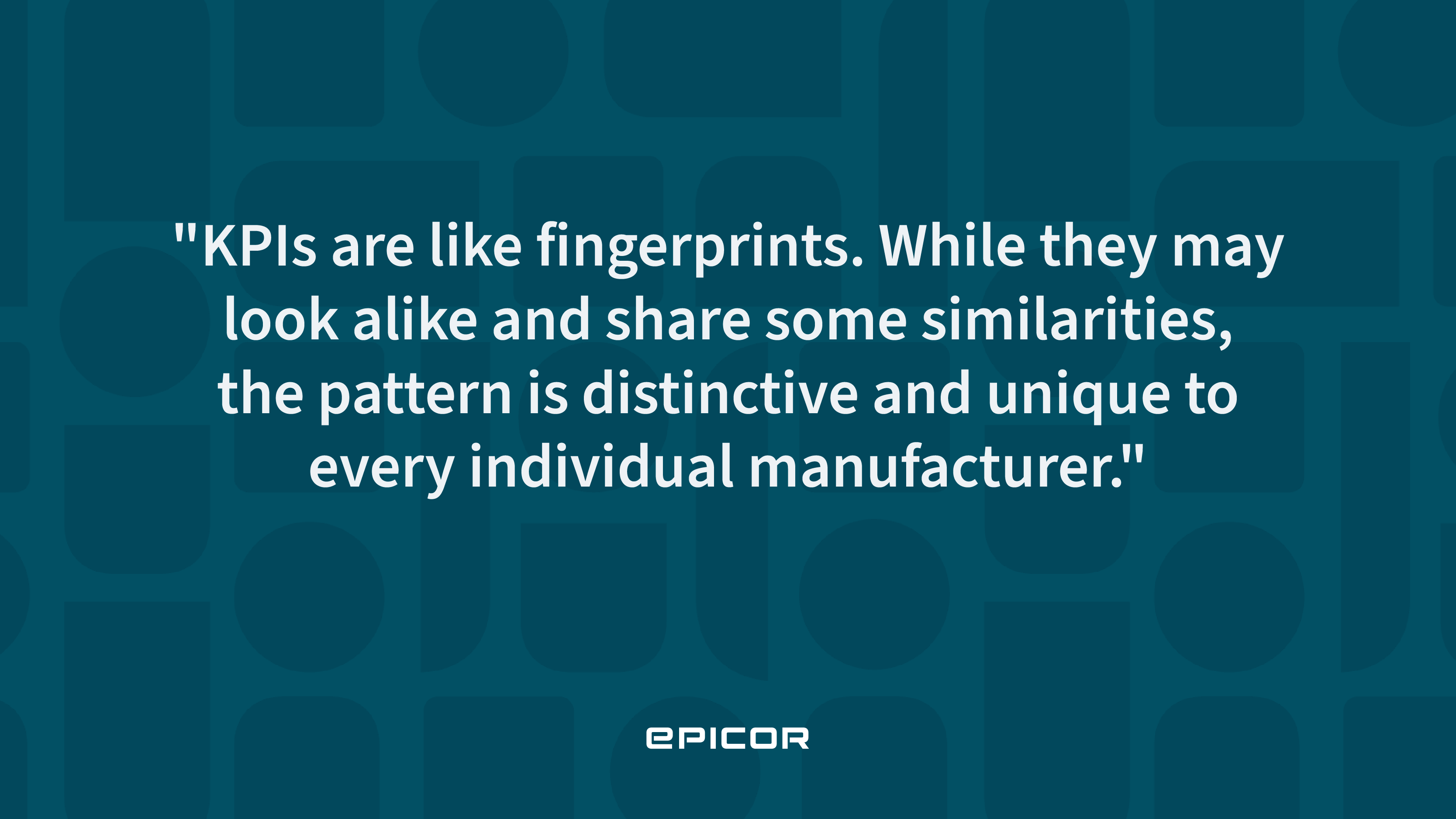Manufacturing KPIs
by Jason Bullard, on Jan 11, 2024 4:31:15 PM
The importance of identifying, quantifying, and contextualizing the right metrics and measurables

Key performance indicator (KPI) is one of the most commonly and casually used terms when it comes to evaluating manufacturing production and performance. KPIs are really just a fancy way of talking about numbers: the metrics and measurables that enable manufacturing decision-makers to assess how well and in what manner essential tasks are being performed, and what the outcomes are as a result.
The important part of a KPI is that first word: key. In a complex production environment, there are endless opportunities to measure a wide variety of variables. The trick is to sift through the noise and zero in on the critical numbers that, ideally, do two things: 1. They distill chaos and complexity and tell you what you need to know about personnel or station performance with as much clarity and simplicity as possible; and 2. They reveal friction points, inefficiencies, and operational issues with a level of detail that makes it possible to improve that performance.
The good news is that the best examples of a new generation of connected process control solutions provide a radically enhanced ability to measure and present manufacturing KPIs with a previously unimaginable degree of precision and flexibility. KPI categories can range from time and resource allocation to quality and throughput metrics. The bad news is that picking the right KPIs isn’t always as easy as one might think. With that in mind, there are a few things that manufacturing decision-makers and their technology partners need to recognize before selecting (and utilizing) the right KPIs for their operation:
The big three
There are three conditions that are essential prerequisites for setting and measuring KPIs:
- A consistent process
- Clearly established standards
- The tools to measure
The first two are relatively self-explanatory: measuring anything without consistency and standardization means comparisons become useless: numbers without context. Those standards give you something to measure against. The third bullet is where digital transformation, connected factories, and connected process control solutions have truly changed the game. Manufacturers now have the ability to measure anything with automated ease and meticulous precision—and to record and retain those measurements in a manner that facilitates clear and logical comparisons, often in real time. These advanced capabilities make KPIs not just more relevant, but significantly more impactful as a tool to drive process refinements and improve outcomes.
Every company’s KPIs are unique
There will always be common KPI categories and types of measurables that similar manufacturers might choose to focus on. Production run rates, first-time quality percentages, shift summary reports, up-time versus downtime, scrap rates, overall equipment effectiveness measurements (OEE), inspections outcomes, product testing metrics, and shipping schedule adherence are just a few of the KPIs that are likely familiar to many manufacturers. But because the physical and technological contours of every production environment are a little different, because every company’s processes and priorities are specific to their culture and operational architecture, KPIs are like fingerprints. While they may look alike and share some similarities, the pattern is distinctive and unique to every individual manufacturer. Consequently, it’s important not to select KPIs based on general guidelines or on what your competitor might be doing. Focus on the metrics that matter to you.
Possible pitfalls
Some of the most common KPI mistakes have to do with picking the right KPIs, as referenced above, and with measuring those KPIs. KPI data gathering has to be consistent and standardized, with clean, usable data and a level of precision and accuracy that makes those measurements relevant. In manufacturing as in sports, precision matters: a handheld stopwatch will never be as effective as a digital timer connected to a motion sensor or camera. Fortunately, the right connected process control solution makes avoiding those pitfalls much easier.
The biggest remaining stumbling block that many manufacturers encounter is making changes based on incomplete or non-standardized KPIs, without conducting the kind of root-cause analysis required to understand why something is happening (or not happening). For example, a shortfall in shipping deliveries on time is the kind of problem one manufacturer might try to solve with more manpower—a costly solution. A different manufacturer with better tools and more sophisticated KPIs might recognize that the real issue is an inefficiency in the packaging process and might even be able to solve the problem while actually decreasing personnel costs. In other words, manufacturers who master their KPIs might soon be measuring something else: their expanding profit margins.
